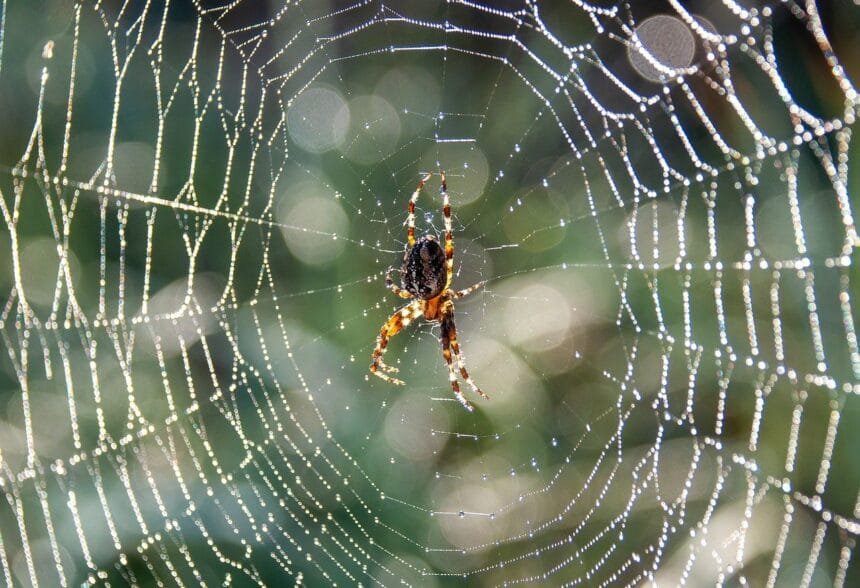Introduction: So I’m a Spider So What?
Spiders, often misunderstood or feared, are one of the most fascinating creatures on Earth. Despite the common stereotypes and misconceptions surrounding them, spiders play crucial roles in our ecosystems. The phrase “So I’m a spider so what“ encapsulates the idea that spiders should be respected for what they are, rather than feared or dismissed. In this article, we will explore the significance of spiders in the natural world, delve into their unique characteristics, and explain why the phrase “So I’m a spider so what” holds more meaning than we might initially realize.
So I’m a Spider So What: The Role of Spiders in Nature
The phrase “So I’m a spider so what” might seem casual, but it hints at a deeper understanding of the creature itself. Spiders are integral to maintaining balance in the natural world. They are not just misunderstood predators, but also beneficial species. Here’s why:
- Natural Pest Control: Spiders are skilled hunters, and many species play an essential role in controlling the population of pests. In gardens and homes, spiders consume a variety of insects, including mosquitoes, flies, and other bothersome creatures. By keeping pest populations in check, they help reduce the need for chemical pesticides, which can have harmful effects on the environment.
- Biodiversity Support: Spiders contribute to biodiversity by providing food for other animals. Birds, reptiles, and mammals often rely on spiders as a food source. In turn, these predators help maintain the balance of various ecosystems, demonstrating the interconnectedness of nature.
- Pollination: Some spiders, particularly certain species of orb-weavers, also play a part in pollination. While they are not primary pollinators like bees, they do occasionally contribute to the transfer of pollen as they move between flowers in search of prey.
So I’m a Spider So What: The Anatomy of a Spider
To truly understand the statement “So I’m a spider so what”, it’s important to appreciate the unique features that make spiders remarkable creatures. They are often recognized for their distinctive anatomy, which sets them apart from insects and other arachnids.
- Eight Legs: One of the most obvious features of spiders is their eight legs. Unlike insects, which have six legs, spiders use all eight legs for various tasks, including building webs, hunting, and moving. These legs are covered in fine hairs that help spiders sense their environment and detect vibrations.
- Silk Production: Spiders are known for their ability to produce silk, a remarkable material that they use to build webs, create shelters, and catch prey. The silk is produced by specialized glands in the spider’s abdomen and can be used in a variety of ways. It is one of the strongest natural fibers known to science, and its versatility allows spiders to create different types of webs depending on their species and environment.
- Fangs and Venom: Spiders have fangs, or chelicerae, which they use to inject venom into their prey. This venom is typically used to immobilize and digest their food. While many spiders have venom that is harmless to humans, some species possess venom potent enough to incapacitate larger prey, such as insects or small mammals.
- Exoskeleton: Like other arthropods, spiders have an exoskeleton, which serves as a protective outer layer. This exoskeleton is made of chitin, a tough, flexible material that allows spiders to maintain their shape and protect their internal organs.
So I’m a Spider So What: Spiders and Human Interaction
Humans and spiders have a long history of interaction, and the relationship has been filled with both fear and fascination. While some people view spiders with disdain or fear, others appreciate their role in the ecosystem and their unique qualities.
- Fear of Spiders (Arachnophobia): Many people have an irrational fear of spiders, known as arachnophobia. This fear is often exaggerated and rooted in cultural myths, media portrayals, and personal experiences. While some fear may stem from the idea that spiders are dangerous, the vast majority of species are harmless to humans. In fact, most spiders are not only non-aggressive but also incredibly beneficial for controlling pest populations.
- Spiders as Symbols: In various cultures, spiders have symbolic meanings. In some Native American traditions, spiders are seen as symbols of creativity and patience, as they weave intricate webs. In other cultures, spiders are associated with mystery, transformation, and fate. In modern times, the phrase “So I’m a spider so what” might represent an acceptance of one’s individuality, just as spiders are often seen as unique and self-sufficient creatures.
- Spiders in Popular Culture: Spiders have become iconic in popular culture, with characters like Spider-Man and the portrayal of spiders in horror films cementing their place in human consciousness. These portrayals often play on the fear or fascination people have with spiders, amplifying the drama and intrigue surrounding them. However, they also serve as reminders of how spiders are perceived by society—both feared and admired.
So I’m a Spider So What: The Benefits of Embracing Spiders
Now that we’ve discussed the unique qualities and roles of spiders, it’s time to reflect on why we should reconsider our views on them. “So I’m a spider so what” is more than just a casual statement; it’s a call for understanding and acceptance. Here are some benefits of embracing spiders:
- Natural Pest Control: As mentioned earlier, spiders help keep pest populations under control. By allowing them to live in our homes and gardens, we reduce the need for harmful chemical pesticides. This not only helps the environment but also keeps our homes healthier and more balanced.
- Biodiversity Preservation: Spiders contribute to the overall health of ecosystems by supporting food webs and encouraging biodiversity. By protecting spiders, we help ensure that other species that depend on them for food remain stable, contributing to a balanced ecosystem.
- Learning from Spiders: Spiders offer valuable lessons in patience, resourcefulness, and adaptability. Their ability to build intricate webs, adapt to different environments, and survive in challenging conditions provides a wealth of inspiration. Embracing these qualities can encourage us to approach challenges with a more creative and resilient mindset.
- Promoting Respect for All Creatures: The phrase “So I’m a spider so what” encourages us to be more tolerant and respectful of all creatures, no matter how small or seemingly insignificant. Every species has a role to play in maintaining the balance of nature, and spiders are no exception.
Conclusion: So I’m a Spider So What?
In conclusion, the statement “So I’m a spider so what” challenges us to rethink how we perceive spiders and to acknowledge their importance in the natural world. Far from being mere pests or creatures to fear, spiders are vital players in maintaining healthy ecosystems and controlling pest populations. Their unique characteristics, such as silk production, fangs, and their ability to adapt to diverse environments, make them extraordinary creatures worthy of respect.
So the next time you encounter a spider, remember that they are not to be feared, but rather appreciated for their role in the world around us. So I’m a spider so what? Perhaps this phrase can serve as a reminder to appreciate the small wonders of nature, embrace uniqueness, and recognize the interconnectedness of all living things.
FAQs
- What does “So I’m a spider so what” mean?
- It reflects the idea that spiders should be appreciated for their unique role in the environment rather than feared.
- Why are spiders important in nature?
- Spiders help control pest populations, support biodiversity, and maintain ecosystem balance.
- Are spiders dangerous to humans?
- Most spiders are harmless to humans, with only a few species possessing venom that can cause harm.
- How do spiders contribute to biodiversity?
- Spiders serve as food for other animals and help regulate pest populations, contributing to overall ecosystem health.
- What lessons can we learn from spiders?
Spiders teach patience, resourcefulness, and adaptability in the face of challenges.










